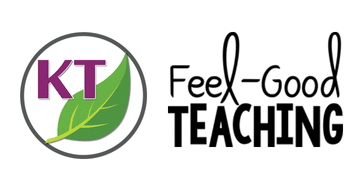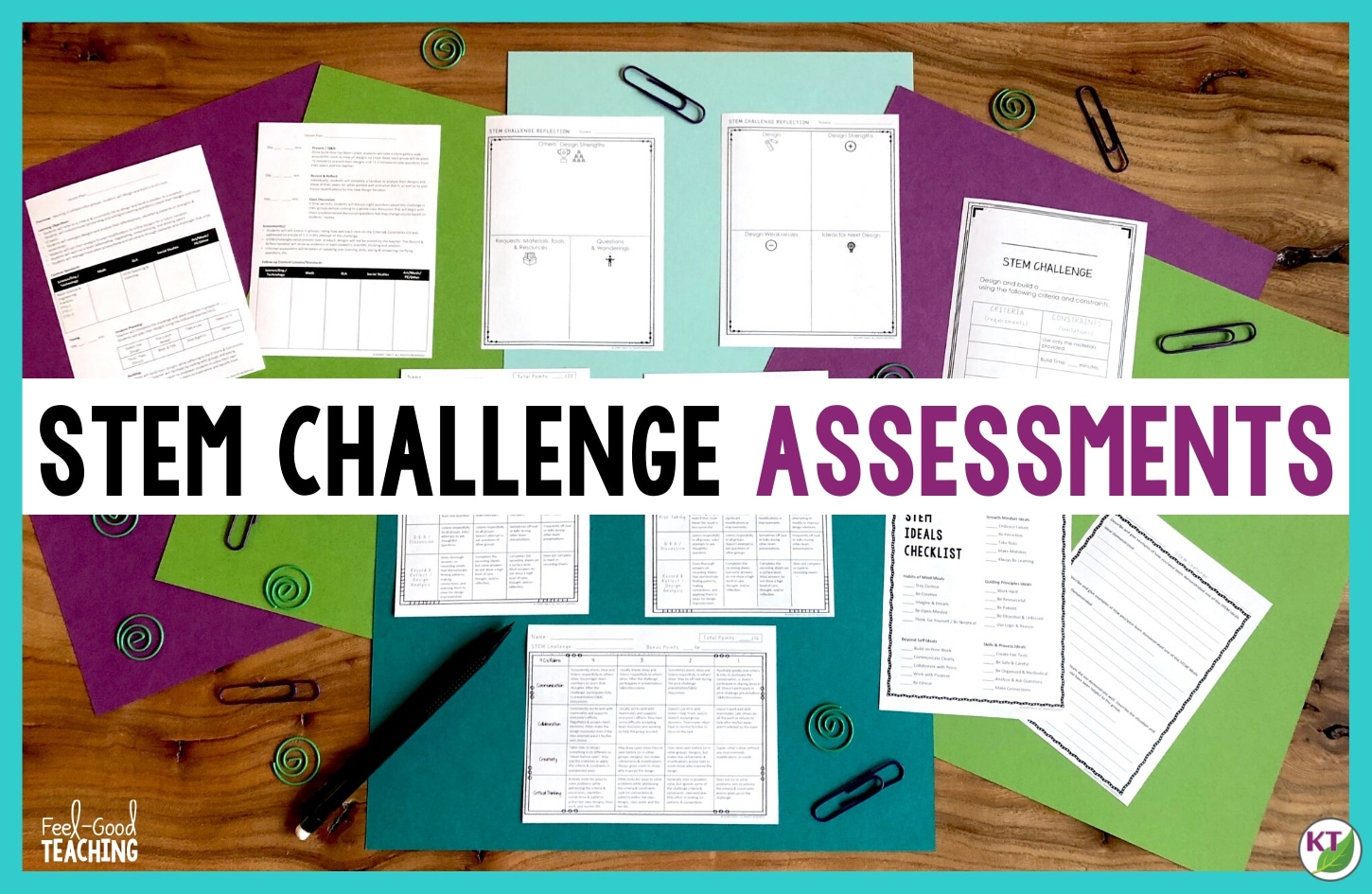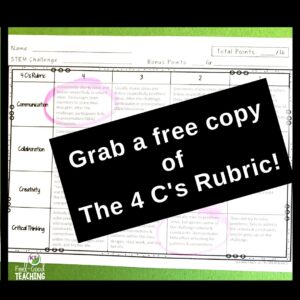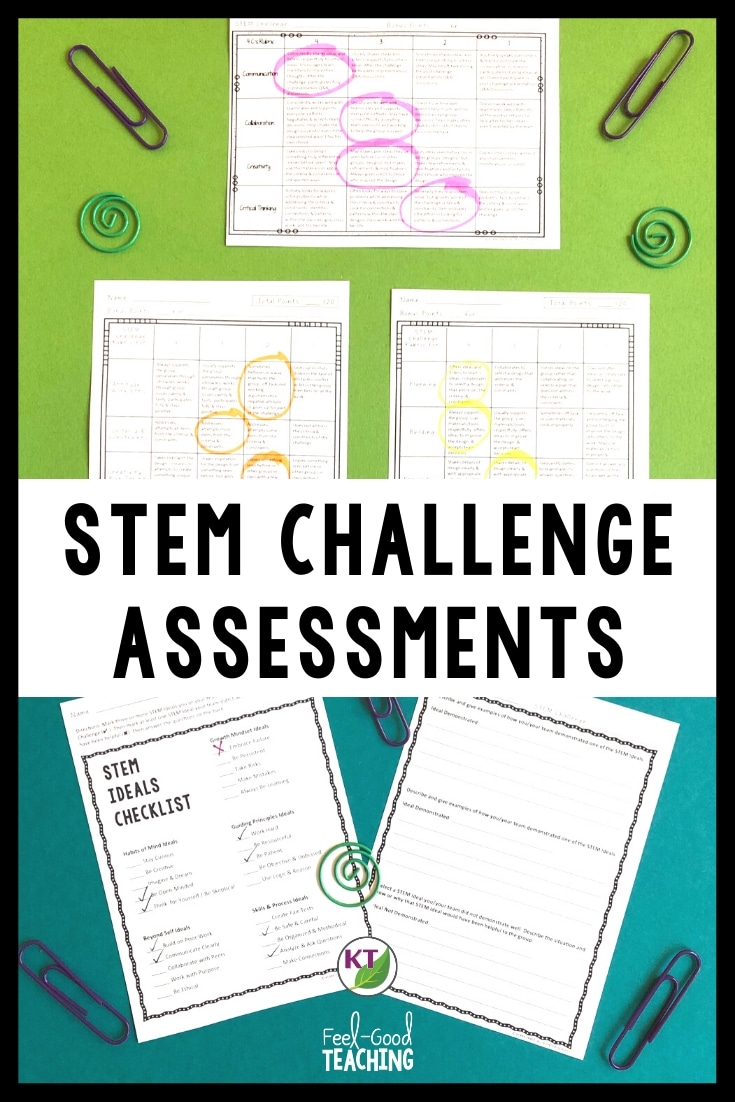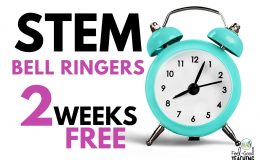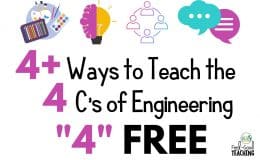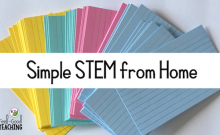I have resisted the topic of assessing STEM Challenges for a long time. I get a worry-headache from the thought of undermining certain goals through excessive assessment.
But after a lot of tinkering and experimenting, I’ve come up with assessment tools I love and can confidently recommend! Read on for some tips, tricks, and tools — including two freebies!
Why Assess STEM Challenges?
Many teachers have reached out and explained that grades are required by their administrators to justify time spent on these “fun” activities. Others have expressed an interest in documenting their students’ growth in the engineering design process, but they struggle with how to do that.
Whatever your reason, you want to make sure your assessments are thoughtfully chosen so they support rather than undermine your overall goals for doing STEM Challenges in the first place.
What to Assess During STEM Challenges?
You want to emphasize the skills most important to you — and this could change throughout the year.
At the beginning of the year, I like to emphasize the 4 C’s of Engineering. I want students to really understand each “C” and what positive and negative examples of each look like.
As we move further into the year, I shift into a focus on the process steps of the STEM Challenge Cycle (see below). Later in the year, I may switch to a hybrid of the 4 C’s and the STEM Challenge Cycle. I also spend some challenges focusing on STEM Ideals.
What Not to Assess During STEM Challenges?
Process over product is my mantra! I never assess students’ designs. Those designs are a vehicle to practice skills and develop scientific thinking. Whether or not the end product is successful is inconsequential compared to how the students analyze those designs and identify features and patterns in successes and failures.
Assessing the designs is problematic for many reasons. First, it leads to decreased risk-taking and creativity in designs. Your high-achievers will not try a weird idea in their design if they believe taking a safer route will lead to a better grade.
More importantly, assessing designs impresses upon the students that it’s normal to expect success in one or two tries. In life — and in science especially — this is unrealistic. How many drug trials does it take to arrive upon a cure for a disease? How many times did Edison’s team need to invent a functional light bulb?
How to Assess STEM Challenges
So what does this actually look like in practice? I assess in three main areas:
1. Design Analysis
With every challenge, each student must complete a written handout for design analysis. This is the “record & reflect” in the STEM Challenge Cycle. If you own any of my challenges, you’ve seen these pages before. If you don’t own one, you can check out this Floating Flower STEM Challenge freebie for an example.
This is where I can see how my students are developing. I take this as a completion grade. When students don’t show full effort, I return the paper with notes and make re-submitting part of a Must Do / May Do list (it’s a must-do).
2. Soft Skills
Rubrics are great for assessing softer skills and for any skill that lends itself well to a continuum. There are four rubrics I use on a consistent basis:
The 4 C’s
The STEM Challenge Cycle
Hybrid: 4 C’s & STEM Challenge Cycle
STEM Ideals
You can ask students to self-assess, or you can assess them yourself. I mix it up, and sometimes I do both.
Note: You can grab a free print version of my 4 C’s Rubric at the end of this blog post!
3. Outstanding Participation in Q/A and Discussion
You know that moment when a student asks another students a deep, thoughtful, or clarifying question that gives you goosebumps and makes you beam with pride? It happens during STEM Challenge share out & Q/A all the time. It’s important to encourage behaviors you like, so I take notes during Q/A on great questions and award bonus points on the rubrics or design analysis handouts for participating so fully in this part of the STEM Challenge Cycle.
Do you have favorite ways to assess STEM Challenges?
Share your ideas & any questions you have in the comments!
PIN ME!
